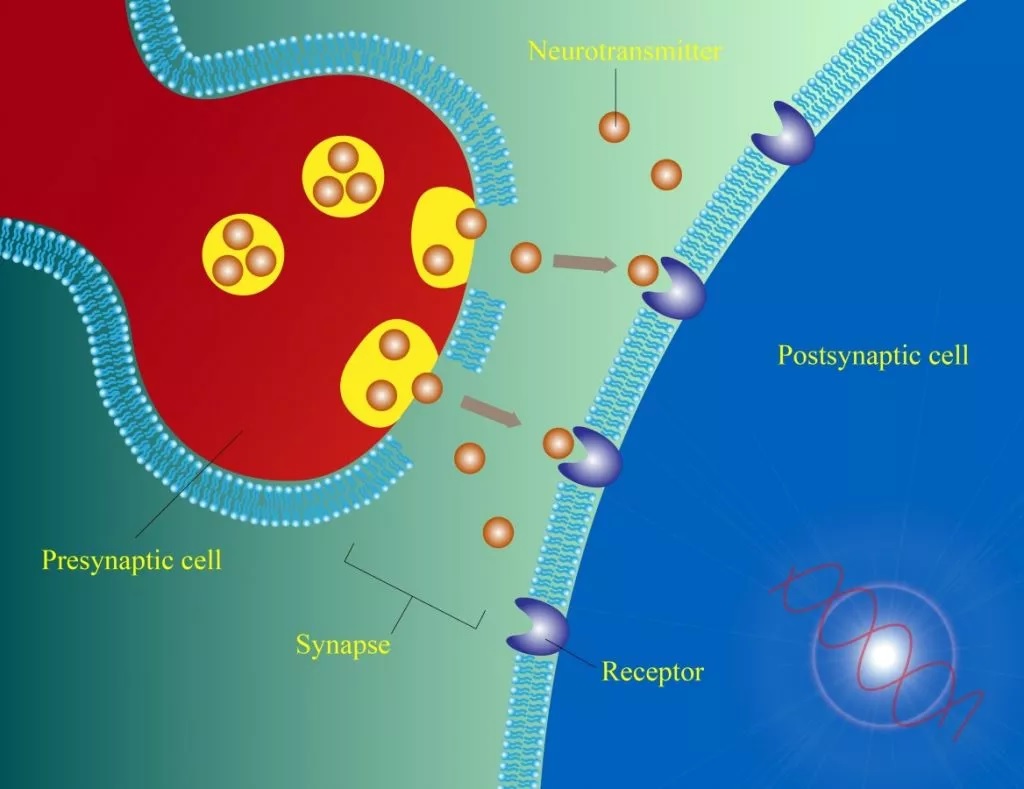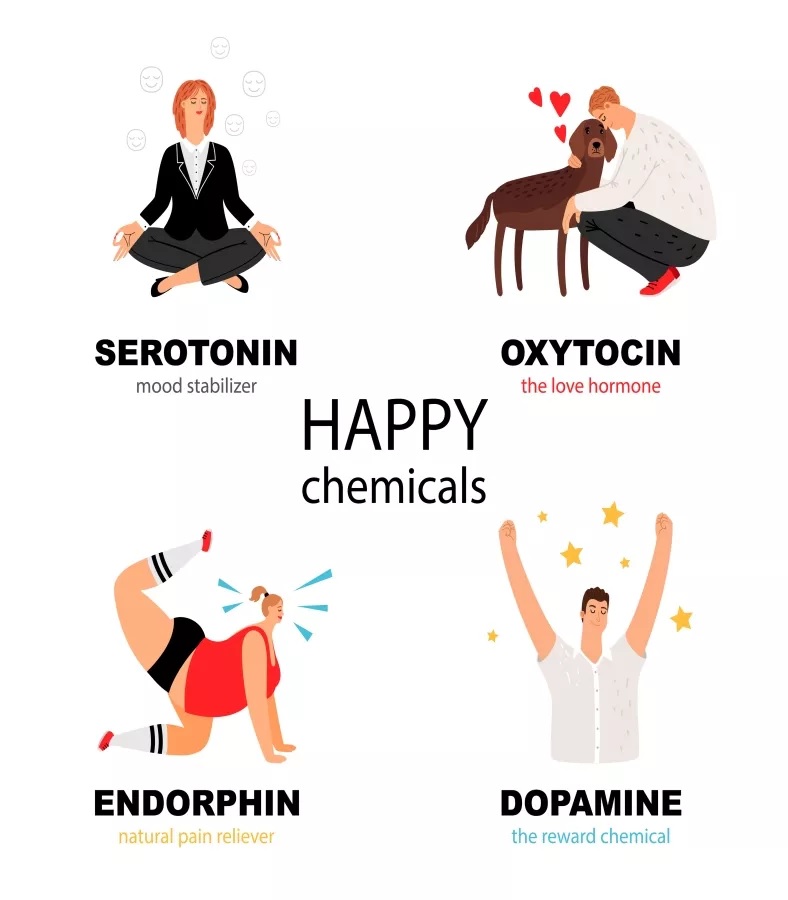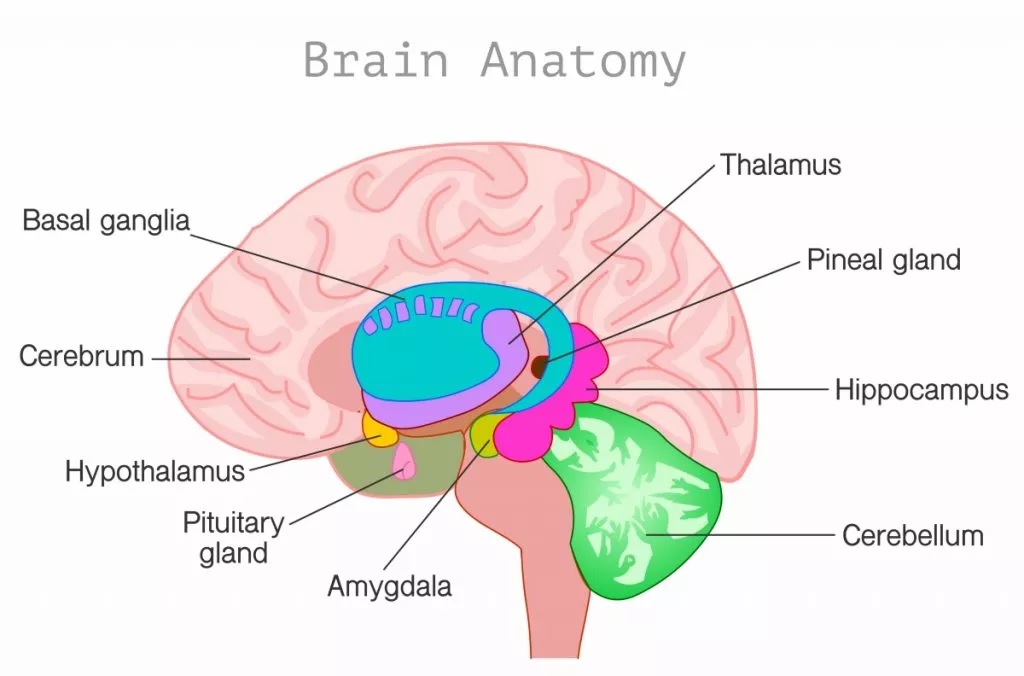Many people wonder: Do drugs and alcohol affect our brains?
The answer is a resounding yes, substance abuse does affect our brains. Clinical studies and imaging of an addict brain vs a normal brain have shown that there are physical changes that take place in the brain when a person abuses drugs or alcohol. Networks are damaged and re-wired, chemical levels change, and the brain becomes dependent on outside substances to maintain homeostasis.
Avenues Recovery, the leading provider of inpatient drug detox and rehab, answers the questions: How do our brains work, and what exactly are the effects of drugs on the brain?
Role of the Brain
Before exploring how drugs affect the brain, we must understand how a regular brain functions. The brain is undoubtedly the most crucial organ in our body, serving as the home of our every thought, emotion, sensation, impulse, and reaction. It enables and regulates all of our vital bodily functions, and controls respiration, vision, body temperature, hunger, memory, emotion, touch and all motor skills. It allows us to process and respond to whatever we experience in an appropriate manner – to tend to our basic human needs, seek, food, shelter and warmth, and shield ourselves from potential danger and harm.
Aside from its role in regulating our physical functions, our brains are also what give us our unique personalities and strengths. They determine our character, our natural inclinations, and our aptitudes.
In short, our brains are our primary source of life – they are us.
How Our Brain Communicates
This fascinating organ comes along with an equally fascinating communication system. How do messages travel from one part of the brain to another, and to the rest of our body?
Our brain is composed of billions of specialized brain cells known as neurons, and together they form many different pathways called circuits. Each circuit has a unique role in enabling or regulating a specific bodily function. It communicates with itself, other circuits, and the peripheral nervous system, to facilitate the smooth execution of each necessary bodily function.
How Does a Message Travel From Point A to Point B?
Each neuron acts as a “switch” of sorts, controlling the flow of messages in the brain’s circuits. When a neuron is stimulated, it releases a chemical messenger called a neurotransmitter into the synapse (space) between itself and the next cell. The neurotransmitter crosses the synapse and latches on to receptors on the neighboring neuron, which activates the neuron and prompts it to release its own neurotransmitter. That neurotransmitter attaches to receptors on the next cell, which activates it… and so the pattern continues.
Once the neurotransmitter has done its job and activated the next neuron, new chemical messengers known as transporters come and “recycle” the neurotransmitter by returning it to its parent cell. This effectively “shuts off” the signal between the 2 neurons. [1]
This is the system the brain uses to transport any and all messages – be they of pain, pleasure, hunger, fatigue, danger, and so on.
Chemicals of the Brain
As we discussed, the brain uses various chemical messengers – or neurotransmitters – to send messages across its circuits. Each type of neurotransmitter produces a different effect on us. There are over 100 types of neurotransmitters in the brain, classified into a few main categories. Below are a few:
· Amino Acids
· Monoamines
· Trace Amines
· Purines
· Peptides
· Gasotransmitters
Which Neurotransmitters Produce Euphoric Feelings in the Brain?
1. Endorphins – Endorphins are peptide neurotransmitters which are naturally released in the brain in response to pain, stress, and tension. They’re also stimulated when we engage in healthy and beneficial activities like eating, exercise, listening to music, and getting a massage. Endorphins have a sedative effect on us – they block pain signals, lower stress levels, and give us a feeling of general health and wellbeing.[2]
2. Gamma-Aminobutyric Acid (GABA) - GABA is an inhibitory amino acid neurotransmitter which slows and calms our brains by blocking certain signals in our central nervous system. It’s naturally released when we engage in activities like exercise, yoga, meditation, and mindfulness, and it lessens the responsiveness and activity of the brain’s neurons. Low GABA levels have been linked to conditions like anxiety, depression, autism and Parkinson’s disease. In contrast, healthy GABA levels have a sedative effect on us similar to that of endorphins – lowering stress levels, alleviating anxiety, and improving sleep patterns.[3]
3. Serotonin - Serotonin is a monoamine inhibitory neurotransmitter which acts as a sedative as well. It increases our appetite, helps regulate our sleep cycles, and stabilizes our emotions and moods – boosting feelings of overall well being. Serotonin is released through exercise, exposure to sunlight, meditation, and a balanced diet. [4]
4. Norepinephrine – Norepinephrine is a stimulant neurotransmitter that arouses our brain and body. Norepinephrine levels are lowest when we sleep, rise during our waking hours, and peak in situations of stress, pressure, or danger. It’s the chemical most heavily involved in the “adrenalin rush” we experience in high-intensity situations. When released in the brain, norepinephrine elevates our heart rate, blood pressure, blood flow, and energy levels, and increases our alertness, vigilance, and attention span. [5]
What Does Dopamine Do?
A fifth neurotransmitter which we have not yet discussed is dopamine – and it plays by far the most integral role in reward, pleasure, and the reinforcement of behaviors.
Dopamine is a stimulant neurotransmitter (like norepinephrine) that is not believed to actually create a pleasurable feeling when it is released. Rather, it helps our brains correlate positive actions we do with the reward of pleasure which we receive in return – creating the motivation to repeat those actions.
How Dopamine Affects our Behavior
Our brain uses the sensation of pleasure to help it identify which behaviors are healthy and beneficial for us. Whenever we engage in a healthy, pleasurable activity – such as eating, exercising, showering, listening to music and so on – our brain releases one of its many pleasure-inducing neurotransmitters in reward, like GABA, endorphins, serotonin, or norepinephrine. This produces a positive and enjoyable sensation in our mind and body. At the same time, our brain releases a burst of dopamine - which tells it that something significant has just occurred which must be remembered. This then creates a link in our brain between the behavior, the resulting reward, and any external factors related to the experience.
Each time we repeat the action and receive a reward, dopamine is again released – making the connection in our brain stronger and stronger, and consequently making it easier and easier to repeat the action without much thought or intention.
What Do Drugs Do to Your Brain?
People often wonder how damaging drug abuse actually is, and how drugs affect the brain. Now that we’ve gained a basic understanding of the brain’s communication and reward system, let’s discuss how addictive substances affect our brain and corrupt its natural balance.
To put it quite simply, drugs and alcohol interfere with the way our brain’s neurons send, receive and process messages.
Certain drugs – such as heroin, marijuana and K2 – have a chemical structure highly similar to that of natural neurotransmitters. This enables them to latch on to the receptors on neurons, thereby “fooling” and activating the neuron – and causing a message to be sent across the reward circuit of the brain.
Other drugs – like amphetamines, cocaine, and opiates – stimulate the brain’s neurons to produce abnormally excessive amounts of pleasure-inducing neurotransmitters. Others block the “transporter” cells from recycling neurotransmitters from the synapses, leaving a huge amount of neurotransmitters simply floating around the space between neurons.
The result of all the above scenarios is the same: The brain receives an intense, pleasurable sensation far greater than it normally does, producing a euphoric “high” which the drug or alcohol user naturally wishes to replicate.
Additionally, drugs stimulate the brain to release unusually large bursts of dopamine, creating a powerful neural link between the action of taking drugs and the intense euphoria experienced as a result. The more a person abuses drugs and receives a “high” in reward – and a burst of dopamine is released - the stronger this neural connection grows. At one point, drug/ alcohol use becomes more of a subconscious reflex than a choice.
Areas of the Brain Affected by Substance Use
There are three principal areas of the brain which are impacted by continued substance use:
1. The Basal Ganglia
The Basal Ganglia, also known as the reward circuit of the brain, plays a critical role in enabling us to experience pleasure, and motivating us to repeat healthy and positive behaviors. It is the area of the brain which is most activated when we engage in wholesome activities.
Research has shown that drugs and alcohol stimulate and over-activate the Basal Ganglia in a significant way, producing the euphoria of substance use and reinforcing the negative behavior. However, as time goes on, the reward circuit learns to adapt itself to the effects of the drug and becomes less and less sensitive to any stimulation. It then becomes increasingly hard to feel pleasure from any activity or behavior other than substance use.
2. The Extended Amygdala
The Extended Amygdala, sometimes called the BSNT (bed nucleus of the stria terminalis), is a neural structure which causes us to experience painful feelings like anxiety, fear, irritability and distress. These discomfiting feelings warn and enable us to protect ourselves in potentially dangerous situations.
Drug and alcohol use have been proven to over-stimulate this area, producing intensely uncomfortable emotions which are felt immediately after the” high” of drugs or alcohol has worn off – commonly referred to as “withdrawal”.
Often, the feelings of anxiety and depression that succeed substance use will grow so great that the victim will use again not even to get high, but merely to escape their brains and just feel “normal”.
3. The Prefrontal Cortex
The Prefrontal Cortex, or Frontal Lobe, is an important section of the brain which controls key mental and behavioral functions such as critical thinking, planning and problem – solving, decision-making, and impulse control. Repeated substance use alters and damages this area of the brain, hindering our judgement and ability to make rational, intelligent decisions. This leads us to seek drugs compulsively, regardless of the havoc it has already wreaked upon our lives and the lives of our loved ones.
The Prefrontal Cortex is also the last area of the brain to develop, making adolescents and young adults especially vulnerable to the virulent disease of addiction.
Aside from these three areas, there are other parts of the brain which can be affected by an addiction. Our brain stem, for example, regulates our basic and most vital bodily functions – such as breathing, sleeping, and heart rate. Opioids can disrupt communication in this area, resulting in depressed breathing and heart rate – and potentially, death.
Addiction: A Vicious Cycle
One of the basic premises of brain health is that there must always be homeostasis within the brain – a perfect balance of hormones, neurotransmitters and any related chemicals.
When a person abuses drugs or alcohol and consistently floods his brain with enormous amounts of pleasure – inducing neurotransmitters, the brain loses its natural balance and becomes over-stimulated. Our brains are resourceful, however, so after a few times, they learn to adapt to this new situation in one (or both) of two ways:
A. The brain slows its natural production of neurotransmitters, producing less and restoring its natural chemical levels
B. The brain reduces the number of receptors on each neuron, reducing its sensitivity to neurotransmitters and restoring its natural balance
Both situations end in the same result: The brain’s natural chemical balance is (temporarily) restored.
In order to achieve the same high, the drug user will now need to use increasingly larger amounts of drugs/ alcohol in order to experience the same effect he first did.
Effects of Prolonged Drug Abuse on the Brain
The problem is that the more drugs or alcohol we use, the less and less neurotransmitters our brain produces on its own. This reduced sensitivity means we will now find it impossible to experience pleasure from any natural and wholesome activity – because the amount of reward it produces is so miniscule (in comparison to drugs) that our brains can no longer register it. And once the euphoria induced by our substance of choice wears off, we don’t just revert to feeling normal as before. The now-reduced levels of neurotransmitters cause us to feel depressed, anxious, irritable, and panicky – as though we want to jump out of our own skin. Life seems flat, futile, frightening, and worthless.
(As we discussed before, the activation of the Extended Amygdala also contributes greatly to these distressing withdrawal symptoms.)
These emotions are so painful that the majority of drug users are compelled to use again not to get high, but just to feel “normal” once more.
Additionally, we discussed that the Prefrontal Cortex – responsible for critical thinking, decision-making and impulse control – is damaged by substance abuse. This makes it extremely difficult for a drug user to assess his situation objectively and make intelligent choices about his substance use.
How to Repair Your Brain After Drug Use
At professional addiction treatment centers, various brain therapies are used to repair the brain damage from drug or alcohol abuse.
Biofeedback is a common treatment used to stabilize the brain after addiction. This kind of therapy uses EEGs and can include guided imagery, meditation and muscle relaxation exercises.
Neurofeedback is a brain-training treatment that is a type of biofeedback. It helps to monitor the brain’s activity and reduce stress and anxiety, and helps the brain to return to normal function.
Biofeedback therapies are often used in conjunction with CBT or DBT for best results.
Conclusion: Hope for The Addicted Brain
When we put together all of the information we’ve just gained, we can now clearly see that addiction is a health condition like any other. Just as a cardiovascular disease damages a heart or smoking damages one’s lungs, addiction is a real disease that physically damages our brains.
Natural chemical balances are thrown off, circuits are re-wired, and critical areas of the brain are damaged in a lasting way. All of these circumstances band together to trap victims into a vicious, endless cycle that can feel impossible to break.
We can also see how pointless and damaging is the stigma that unfortunately surrounds the reality of substance abuse. We want to empower suffering individuals to acknowledge their condition and reach out for help, not hide in the shadows due to the fear of judgement and ridicule. Substance use disorder may be a debilitating disease, but everyone must know that it can be dealt with – and that there is hope, healing and beauty beyond it.
If you or a loved one is suffering from a substance use disorder, reach out to Avenues to find out how we can help you. Let us get you started on your journey home today!
Sources
[1] nida.nih.gov
[5] en.wikipedia.org


